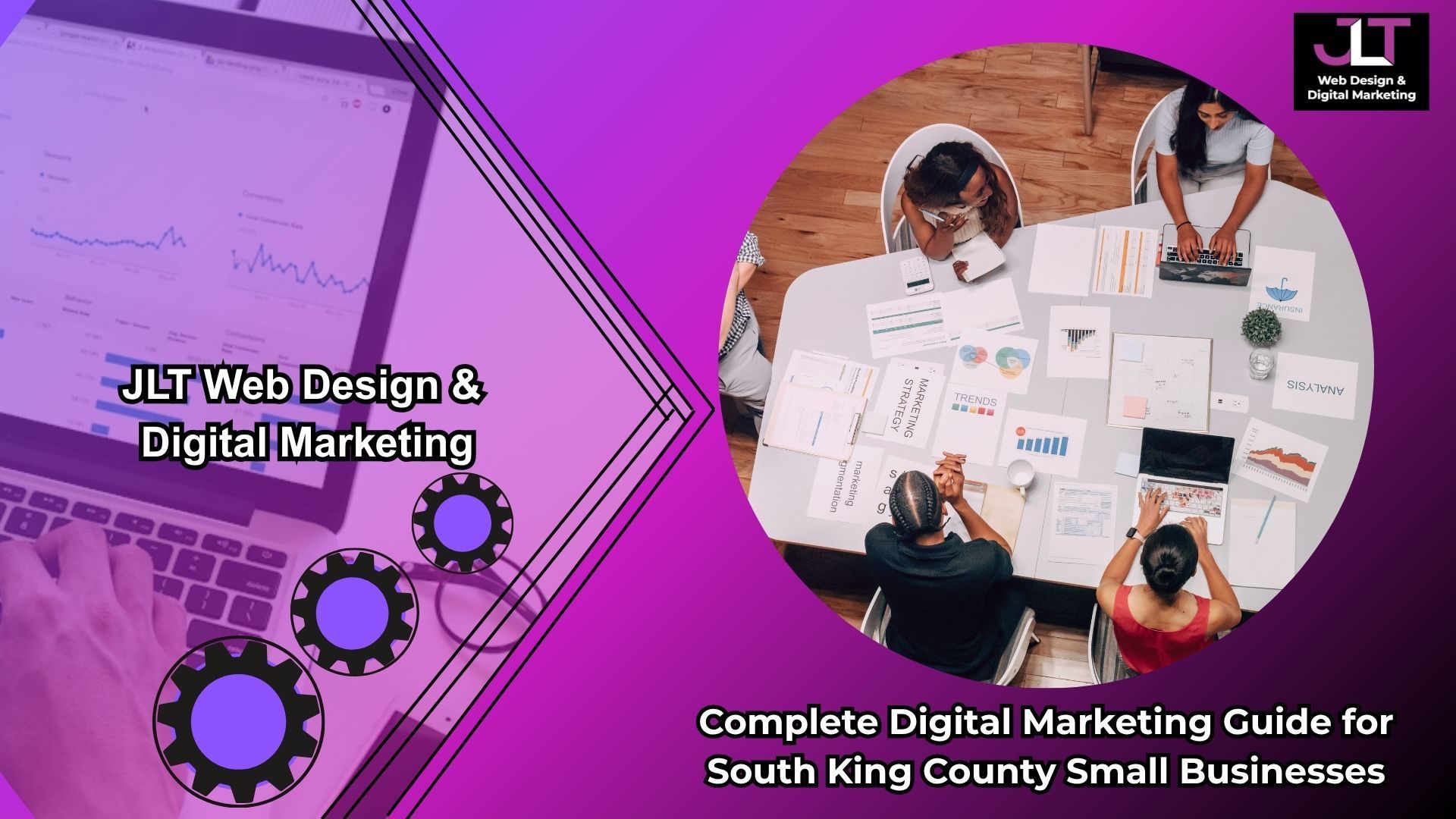Improve Your Website with JLT Web Design & Digital Marketing : SEO Keyword Research

Table of Contents:
- Introduction
- Finding High-Intent Keywords for Better Conversions
- Competitor Keyword Analysis & Gap Identification
- Long-Tail vs. Short-Tail Keywords: When to Use Each
- Conclusion
- FAQs
Enhance your website with expert SEO keyword research
If you own a web design business in Kent, WA, you know how important it is to stand out online. One of the best ways to ensure your business gets noticed is through effective keyword research. By targeting the right keywords, you can attract potential clients who are ready to take action. In this blog, we’ll focus on three simple but powerful strategies for boosting your SEO: finding high-intent keywords, analyzing competitor keywords, and understanding the difference between long-tail and short-tail keywords.
Finding High-Intent Keywords for Better Conversions
What Are High-Intent Keywords?
High-intent keywords are phrases used by people who are ready to make a decision. They’re searching with a clear goal in mind—whether it’s hiring a web designer, signing up for services, or purchasing something. For example, someone searching for "hire a web designer in Kent, WA" is likely closer to becoming a customer than someone simply searching for "web design."
Why They Matter for Your Business
Targeting high-intent keywords is essential because they help attract visitors who are more likely to convert into clients. This means your SEO efforts will be more effective, and you’ll see better results in the form of higher conversions.
Examples of High-Intent Keywords for Kent, WA:
- "Best web design services in Kent, WA"
- "Custom web design Kent, WA"
- "Affordable web design Kent"
- "Hire a web designer Kent, WA"
Tools to Find High-Intent Keywords
- Google Keyword Planner: Helps you find keywords with high search volume and low competition.
- SEMrush: Offers insights into keyword trends and competitor analysis.
- Ahrefs: Provides keyword suggestions and search data to help refine your strategy.
By focusing on high-intent keywords like these, you can drive more qualified traffic to your site and increase your chances of converting visitors into customers.
Competitor Keyword Analysis & Gap Identification
Why Analyze Competitor Keywords?, To stay competitive, it’s important to know what keywords your competitors are ranking for. This gives you insights into what’s working in your industry and helps you spot opportunities for improvement. If you can identify keywords that your competitors aren’t targeting, you can use them to your advantage.
How to Analyze Your Competitors’ Keywords:
- Identify Your Competitors: Look for other web design businesses in Kent, WA, that target similar customers.
- Use SEO Tools: Tools like
SEMrush,
Ahrefs, and
SpyFu can show which keywords your competitors are ranking for. These tools also provide data on search volume, competition, and rankings.
- Find Keyword Gaps: Once you know which keywords your competitors are using, you can identify any gaps keywords that they’re not focusing on but that could help you stand out.
Why Identifying Gaps Is Key
By finding gaps in your competitors’ keyword strategy, you can target areas that they may have overlooked. This gives you an edge, allowing you to attract a more specific and targeted audience. For example, if your competitors are focused on "web design Kent," but aren't targeting "responsive web design Kent," you can use that gap to bring in visitors who are looking for mobile-friendly website solutions.
Long-Tail vs. Short-Tail Keywords: When to Use Each
What Are Short-Tail Keywords?
Short-tail keywords are broad, general terms, typically consisting of one or two words. For example, "web design" or "SEO services." While these keywords attract a lot of traffic, they can also be highly competitive and less specific. This means they might bring a lot of visitors to your website, but not all of them will be ready to become clients.
When to Use Short-Tail Keywords:
- To increase general visibility and brand awareness.
- When you want to target a broad audience.
- To capture large volumes of traffic, even if the conversion rates are lower.
What Are Long-Tail Keywords?
Long-tail keywords are more specific, often consisting of three or more words. For example, “affordable custom web design Kent, WA” or “best SEO services for small businesses Kent.” These keywords have lower search volume but tend to attract more qualified leads who are closer to making a purchase or hiring a service.
When to Use Long-Tail Keywords:
- To target a specific audience (e.g., small businesses in Kent).
- When you want to focus on niches that aren’t as competitive.
- To capture people who are ready to make a decision or purchase.
Why Both Matter
A successful keyword strategy uses both short-tail and long-tail keywords. Short-tail keywords help you increase visibility, while long-tail keywords help you attract qualified leads. By combining both, you can reach a larger audience and also capture those who are more likely to convert into paying clients.
Conclusion
Keyword research is one of the most effective ways to grow your web design business in Kent, WA. By focusing on high-intent keywords, analyzing your competitors, and knowing when to use long-tail and short-tail keywords, you can improve your SEO strategy and drive more targeted traffic to your website. This means more conversions and, ultimately, more business.
Remember, keyword research is an ongoing process: stay updated with the latest trends, analyze your competitors regularly, and adjust your strategy as needed to stay ahead of the competition.
FAQs
- What are high-intent keywords, and why are they important for my business?
High-intent keywords are search terms used by people who are ready to take action. They help attract visitors who are more likely to become paying customers. - How can I find out what keywords my competitors are targeting?
Use SEO tools like SEMrush or Ahrefs to track your competitors' keywords. These tools provide insights into which keywords are driving traffic to their websites. - What’s the difference between short-tail and long-tail keywords?
Short-tail keywords are broad and general, while long-tail keywords are more specific and targeted. Long-tail keywords usually attract visitors who are closer to making a decision. - Can I use both short-tail and long-tail keywords in my SEO strategy?
Yes! A balanced approach that combines both types of keywords will help increase visibility while also attracting more qualified leads. - What tools can help me with keyword research?
Google Keyword Planner, SEMrush, and Ahrefs are great tools for finding relevant keywords, analyzing competitors, and refining your SEO strategy.
By applying these simple yet powerful keyword research strategies, your web design business in Kent, WA, can improve its SEO, attract the right clients, and grow your online presence.
Boost your business with a fast, modern, and SEO-friendly website. JLT Web Design & Digital Marketing makes it easy!
📞
Call : 206-429-4621
📧
Email :
info@jltwebsolutions.com
🌍
Get Your Free Consultation
Let’s build your success online start today!
Follow and Like Us







